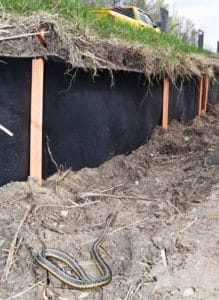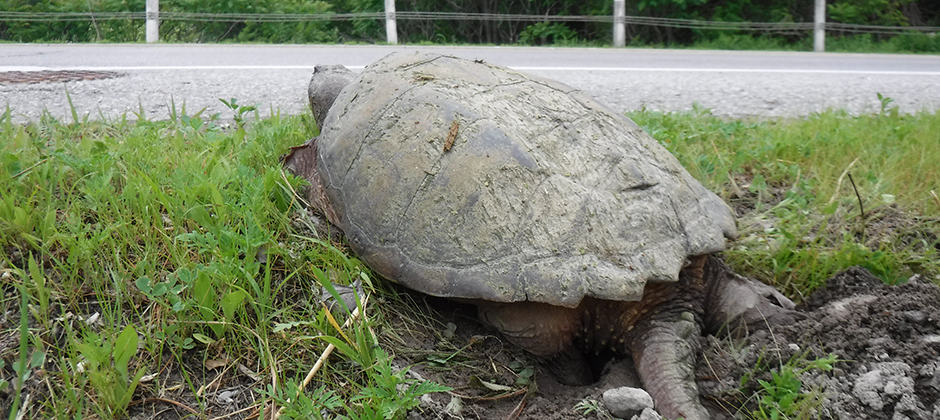Share this article
Barriers and crossing structures can keep turtles safe
As development increases in the Lake Simcoe Watershed in Ontario, Canada, researchers found building inexpensive road barriers connected to crossing structures helps save turtles.
Lake Simcoe is just north of Toronto, and it is experiencing high rates of growth and development, which is expected to continue over the next three to four decades. While forests and wetlands would be protected in these areas as development proceeds, researchers are concerned about how wildlife will move with roads and other barriers in the way.
“Turtles are most vulnerable to that because they’re required biologically to move to upland woodland habitat, and obviously they can’t fly,” said Bill Thompson, the manager of watershed plans and strategies with the Lake Simcoe Region Conservation Authority, an organization that works in partnership with provincial and municipal agencies to protect the watershed around Lake Simcoe.
Thompson co-authored a study published in Conservation Science and Practice in which he and lead author Kaitlyn Read tested if road barriers connected to stream-crossing structures decreased turtle roadkill on existing roads.
The team put up 41-centimeter-tall barriers of solid plastic along roads in some areas that were hotspots for turtle road mortality and left other hotspot areas clear. The walls acted as a barrier for turtles as they crawled up from streams. “The turtle comes up to it and sees that Great Wall of China, and they can’t climb over it,” Thompson said. This fencing was attached to existing bridges, culverts and other structures turtles could use to cross the stream.
The researchers conducted roadkill surveys twice a week during the summer and fall to count the number of animals they saw on the road, whether they were dead or alive. They also used wildlife cameras to detect which species were navigating culverts or other crossing structures.
The team found that the devices were effective in keep the turtles off the roads, especially hatchlings. “We were not fragmenting habitat, but helping them navigate safe passage under the road,” Thompson said.
 However, they did find that while conducting the roadkill surveys, other amphibians and reptiles, like frogs and snakes, were still being killed on the roads. Thompson thinks they were able to climb right over the walls, but by making the walls just a bit taller—about 60 centimeters—they might protect some of these species as well.
However, they did find that while conducting the roadkill surveys, other amphibians and reptiles, like frogs and snakes, were still being killed on the roads. Thompson thinks they were able to climb right over the walls, but by making the walls just a bit taller—about 60 centimeters—they might protect some of these species as well.
The researchers have already discussed their findings with road managers and land use planners in hope that they might add some of these tools when they’re already doing roadwork.
There’s already strong interest in helping out the turtles from the public, he said. “Everybody likes turtles,” Thompson said. “When you’re talking about wildlife passages, people get nervous about the cost or don’t really understand it. But when you say you’re protecting turtles, it’s easy to get that public buy-in.”
Header Image: A snapping turtle lays eggs beside a road. Credit: Kaitlyn Read








